A Coggon
Quantifying the zoonotic risk profile of European influenza A viruses in swine from 2010 to 2020 inclusive
Coggon, A; Lopes, S; Simon, G; Arendsee, Z; Chen, KF; Chiapponi, C; Essen, S; Everett, H; Hervé, S; Hufnagel, DE; Mollett, B; Moreno, A; Pekosz, A; Richard, G; Rothman, RE; Shaw-Saliba, K; Van Reeth, K; Venkatesh, D; Brown, IH; Anderson, TK; Baker, AL; Lewis, NS
Authors
S Lopes
G Simon
Z Arendsee
KF Chen
C Chiapponi
S Essen
H Everett
S Hervé
DE Hufnagel
B Mollett
A Moreno
A Pekosz
G Richard
RE Rothman
K Shaw-Saliba
K Van Reeth
D Venkatesh
IH Brown
TK Anderson
AL Baker
NS Lewis
Abstract
H1 and H3 influenza A viruses (IAVs) circulating in European pigs are markedly distinct from those circulating in other global swine populations. These viruses exhibit significant genetic diversity, further expanded by periodic interspecies transmission of IAVs from humans into pigs, followed by sustained circulation. Several zoonotic IAV infections in humans in Europe have been associated with the 1C lineage of H1 IAVs. Given the predominance of H1 detections in pigs and their zoonotic potential, we quantified antigenic evolution of H1 viruses in European pigs using ferret and pig models and assessed diversity relative to swine IAV vaccine strains. Ferret and swine antisera comparisons revealed no significant differences in antibody responses. Viruses of the 1A.3.3.2 clade exhibited reduced cross-reactivity to human seasonal vaccine strains from 2009. Viruses of the 1B.1.2.2 clade showed no cross-reactivity to the 1978 human seasonal influenza viruses nor to candidate vaccine viruses (CVVs). Clades 1C.2.1 and 1C.2.2 human variant strains had variable cross-reactivity to the tested 1C lineage CVVs, and 1C.2.4 and 1C.2.5 clade viruses exhibited rapid genetic diversification. Many viruses tested were antigenically distant from swine influenza vaccine-representative strains, highlighting the need for updated vaccine formulations. Importantly, age-stratified human serum panels revealed limited population cross-protection to tested viruses, particularly for antigenically heterogenous viruses. These findings quantify the genetic and antigenic diversity of co-circulating IAV lineages and identify specific groups of viruses that may represent a greater risk to animal and public health. These results can be used to inform future pre-pandemic preparedness efforts.IMPORTANCEOur data demonstrate the importance of matching swine influenza vaccine seed strains to contemporary circulating viruses and highlight how vaccine mismatch may drive additional antigenic evolution and demonstrate the need for constant monitoring and surveillance of swine viruses for the benefit of both animal and global health. These findings can be used to inform and prioritize future pre-pandemic preparedness efforts.
Citation
Coggon, A., Lopes, S., Simon, G., Arendsee, Z., Chen, K., Chiapponi, C., Essen, S., Everett, H., Hervé, S., Hufnagel, D., Mollett, B., Moreno, A., Pekosz, A., Richard, G., Rothman, R., Shaw-Saliba, K., Van Reeth, K., Venkatesh, D., Brown, I., Anderson, T., …Lewis, N. (2025). Quantifying the zoonotic risk profile of European influenza A viruses in swine from 2010 to 2020 inclusive. Journal of Virology, https://doi.org/10.1128/jvi.00306-25
| Journal Article Type | Article |
|---|---|
| Acceptance Date | May 7, 2025 |
| Online Publication Date | Jun 4, 2025 |
| Publication Date | 2025 |
| Deposit Date | Jun 11, 2025 |
| Publicly Available Date | Jun 11, 2025 |
| Print ISSN | 0022-538X |
| Electronic ISSN | 1098-5514 |
| Publisher | American Society for Microbiology |
| Peer Reviewed | Peer Reviewed |
| DOI | https://doi.org/10.1128/jvi.00306-25 |
| Keywords | zoonotic influenza A Virus; European swine; antigenic cartography; pre-pandemic risk assessment; genetic diversity; genetic evolution; antigenic evolution; EVOLUTION; INFECTION; VACCINE; POPULATIONS; ORIGIN; AGE |
Files
Quantifying The Zoonotic Risk Profile Of European Influenza A Viruses In Swine From 2010 To 2020 Inclusive
(967 Kb)
PDF
Licence
http://creativecommons.org/licenses/by/4.0/
Publisher Licence URL
http://creativecommons.org/licenses/by/4.0/
Version
VoR
Downloadable Citations
About RVC Repository
Administrator e-mail: publicationsrepos@rvc.ac.uk
This application uses the following open-source libraries:
SheetJS Community Edition
Apache License Version 2.0 (http://www.apache.org/licenses/)
PDF.js
Apache License Version 2.0 (http://www.apache.org/licenses/)
Font Awesome
SIL OFL 1.1 (http://scripts.sil.org/OFL)
MIT License (http://opensource.org/licenses/mit-license.html)
CC BY 3.0 ( http://creativecommons.org/licenses/by/3.0/)
Powered by Worktribe © 2025
Advanced Search
